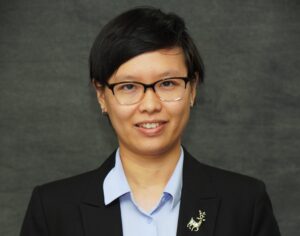My research focused on using computational approaches and spatial and social network methods to advance understanding and solutions for contemporary urban challenges. My current research has two themes: 1) examining how urban network infrastructure (e.g., transportation, social, or digital infrastructure) can simultaneously be inclusive and exclusive, offering connectivity and access for certain populations, places, or types of flows, while marginalizing or restricting others, 2) exploring how data, technology, and AI can support, transform, or challenge planning practices and public services.
My approaches are largely inspired by the field of network science, complex systems, and critical & participatory approaches in GIS and planning, thus grounding my research in the pursuit of a diverse, equitable, and sustainable network society.
A few of my projects are detailed below.
Project 1: The process of identifying vacant, abandoned, and disinvested properties is challenging for cities that want to acquire them for redevelopment. In [a paper](https://journals.sagepub.com/eprint/4PZVYRJYYYE3UKG7IBGJ/full), my team created a human-in-the-loop machine learning (HITLML) model and applied it to a parcel-level case study in Savannah, Georgia. We found that Human-in-the-loop ML (HITLML) exceeds the standard ML by a wide margin when the predictions are validated against third-party sources (e.g., the city’s survey or USPS vacancy records). The predictions also differ from those from human practices. Since the Human-in-the-loop ML only requires a small training sample to generate standardized, accurate, reliable, and robust predictions. It is particularly good for cities that lack an unbiased, large-scale dataset for ML, are ready to maintain and upgrade their digital infrastructures, and seek an alternative approach to evaluate their existing workflow.
Project 2: Do more connected cities produce more patents than others with similar GDP, population, and education? In [a paper](https://www.sciencedirect.com/science/article/pii/S0198971524000218), my team measured intercity connectivity with three networks (social media, mobility, and scientific collaboration) for the two largest economies, China and the US. Our results indicate that even though big cities have advantages in producing complex patents due to their dominant positions in multiple networks, small cities may catch up if they improve their intercity connectivity. Causal relationships need to be further tested. Still, the correlation poses interesting questions about the future of cities marginalized/outperforming in intercity networks, such as small cities dedicated to tourism (for enhanced mobility flows) and digital nomads (for enhanced digital connectivity), or those fly-over towns that are losing tractions in both population and ideas alike.
I started college studying Sociology and then ventured into Computational Science as I became fascinated by complex systems. I found urban planning my home for PhD because I love how cities are the perfect ground to land my passion for using computational and data-driven approaches to create tangible social impacts.
Our cities are becoming more connected, and yet the increased connections and their associated growth of urban infrastructure can encode inequality and exclusion. I am dedicated to developing a more nuanced understanding of our urban network infrastructure under the lens of “network duality”, thinking about when and how an urban network infrastructure becomes inclusive and exclusive to certain populations, places, or types of flows, and how to contest the negative impacts coming from duality.
I also want to contribute to understanding how AI development is rapidly reshaping the opportunities and challenges in the planning practices and public sectors. The areas of work in these fields are often high-stake and require better practices and frameworks for governance.
